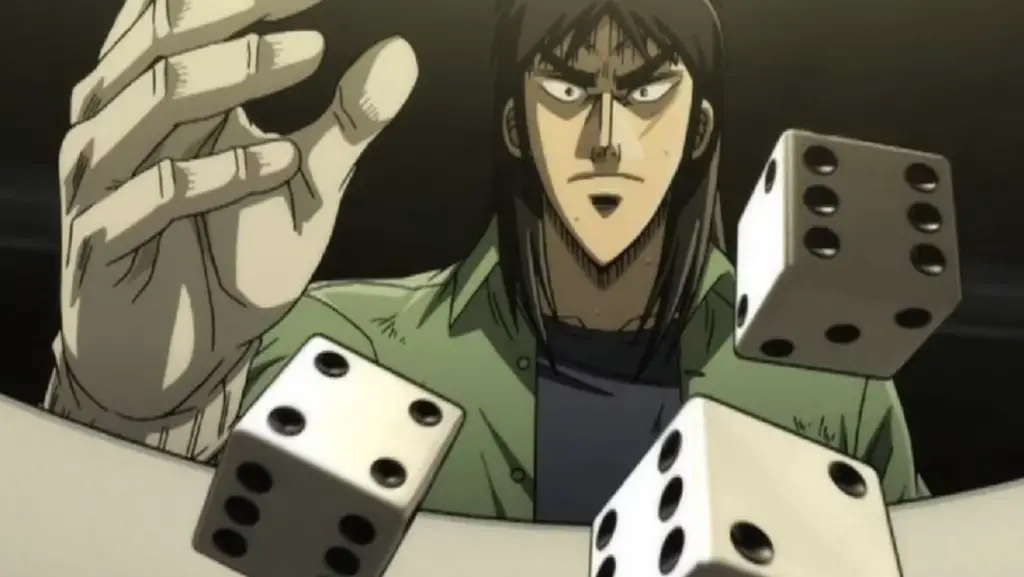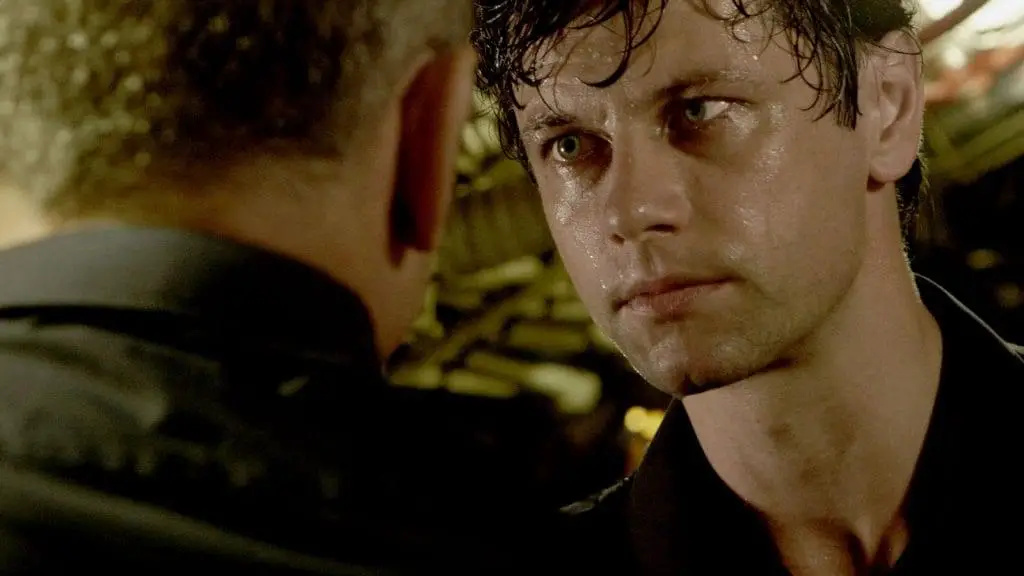
One of Norman Jewison’s core themes of his career is the singular figure and how his or her’s goals, desires, and actions affect the people around them. “Fiddler on the Roof” had Tevye wanting to be a rich man and to have his daughters married off according to the matchmaker’s specifications because after all, it’s tradition! Virgil Tibbs (Sidney Poitier) came to the South to investigate a murder and drew the ire and racist views of Gillespie (Rod Steiger). Thomas Crown wanted what he wanted, and led Vicki Anderson (Faye Dunaway) through a chase and a brief affair. Others, such as “Jesus Christ Superstar”, “Rollerball”, “…And Justice for All”, and “Moonstruck” observe this same theme.
So does “The Cincinnati Kid”, where Steve McQueen stars as Eric Stoner, in New Orleans and hungry for a good poker game. He takes them where he can find them, and then Shooter (Karl Malden), a good honest dealer and his makeshift agent, lets him know that Lancey Howard (Edward G. Robinson) is in town. Aging Lancey Howard, also known as “The Man”, the best in stud poker. His calm playing style confounds even the hardened players such as Slade (Rip Torn), a Southern gentleman with a grudge on his mind once he loses to Lancey in a long game. Shooter has always kept his honesty and his integrity, even through the malicious teasings by his wife Melba (the voluptuous Ann-Margret, always a welcome appearance), but is squeezed by the balls by Slade who holds markers (bits of paper detailing money owed) and demands that in this game between The Man and The Cincinnati Kid, Shooter had better deliver a few helpful hands to the kid so Lancey can be defeated and Slade’s ego can be orgasmically satisfied.
So you see, there’s Jewison’s theme inherent here. The Cincinnati Kid wants to take on Lancey Howard and in turn, the shufflings begin. In the atmosphere of the inimitable New Orleans, a lot of plans are being made. Stoner’s girlfriend Christian (the equal-to-Ann-Margret-but-not-quite-in-sexuality Tuesday Weld), feels that he prefers the game to her and goes back to her parents’ farm for a while. Eric takes Melba to a cockfight which actually arouses her, but is cooled off immediately by him, who is razor-intent on not cheating on Christian. Later, Eric walks on through New Orleans the night before the game, trying to figure himself out, nervous about Lancey and the cards, but determined to win. And Norman Jewison continues with his pedestrian directing style, which does bring out good performances from the actors, but the real credit for the tension of the big poker game goes to Hal Ashby, later the director of “Shampoo”, “Coming Home”, and “Being There”. His imaginative style, helped along by cinematographer Philip Lathrop, brings the game to many boiling points, even jerking us out of the watching effectively at one point when Pig (Jack Weston) loses big to Lancey and is a sore loser about it before storming outside, gone for good, or at least in the timeframe of this movie.
Giving into the nights and days of New Orleans is easy with all the fine supporting actors populating the jazz-filled city. It’s not only Joan Blondell in high spirits as Lady Fingers, but also those not credited. The dancing feet on the street at the beginning. The young kid who challenges Cincinnati in throwing coins to see whose comes out ahead. His walk that takes him past a jazz group, playing long into the night. Jewison is at least good at creating atmosphere, of getting to the feeling of a place in how it exists 24 hours a day, how it operates at night, and even how unforgiving it can be. “The Cincinnati Kid” is one of Jewison’s best efforts and part one of a collaboration with McQueen which concluded with “The Thomas Crown Affair”. Jewison talks about this and more on the DVD, which packs in what’s not needed.
Jewison’s commentary was recorded this year, but recorded in any year, it still would not have given any real insight either way. Jewison praises his actors and key members of his crew, which is standard practice on many commentary tracks, but here, he does it in remembering history. There’s a difference in that the praising of today on audio commentaries sounds more like kissing a*s, in an attempt to retain favor with whomever the participant has worked with. Gotta keep your contacts intact, though what it will matter years later is still unfounded. Here, Jewison reflects on the time long past, appreciates what his cast and crew did (without the sucking up sounds), and moves on. “Moving on” for Jewison consists of musing over what’s happening on screen, which includes utterances of dialogue right after they’re said, and giving no real insight into the filming. The only fascinating story on this track is too vague, as Jewison talks about replacing Sam Peckinpah, who had shot some footage in black-and-white. Peckinpah was booted off by producer Martin Ransohoff, but Jewison never makes it clear how he came on board the project. This was obviously another “for hire” job of which Jewison takes a lot, but how? Did Ransohoff know of Jewison through Peckinpah? Did Peckinpah recommend Jewison before unceremoniously leaving the project? Jewison is no help at all.
The second feature, which is useful for poker fans is a scene-specific commentary by Phil Gordon and Dave Foley of “Celebrity Poker Showdown”. Warner Bros. is on to something with this. There are two options for this. You can watch the film and toggle through the audio tracks until finding the Gordon and Foley track and sit through a lot of dead air, or you can access it through the “Special Features” menu, where it will pull you through all the scenes they comment on. One scene finishes and the DVD skips to the next scene in which they talk. Each studio should consider this practice. It may be disorientating to viewers, but it’s perfect for those commentary participants that leave a lot of dead space in their tracks by simply watching the film. Foley handles the jokes on this track, a mixture of good and crap, while Gordon discusses his experiences playing poker, the hands being played in the film, and the discrepancies, such as the rule of “no string bets” in the movie being disregarded almost right away. It adds up to 46 minutes of painless commentary, without having to sit through the movie another time. This could be the most revolutionary time-saver for people like me who hate dead air on a commentary worse than a Pauly Shore movie.
The last of the value here comes with “The Cincinnati Kid Plays according to Hoyle”, which features the technical advisor of the film, an expert at card plays and Joan Blondell, learning the proper moves of dealing for her filmed moments. It’s a compelling look at the nature of card games just by the methods of dealing. Then there’s the theatrical trailer, always a pleasure to watch as everyone involved has the Cincinnati Kid’s name on their minds.
As part of the Essential Steve McQueen Collection, including this and a number of many other films (excepting “Never So Few” which is included in the set, but is mediocre), “The Cincinnati Kid” is one of the definitions of what made Steve McQueen who he was. Through the roles he chose, he fit snugly in them, using his calm wits and all else of him to turn himself into the ultimately cool actor. No wonder a good number of men wanted to be like him and probably still do.

